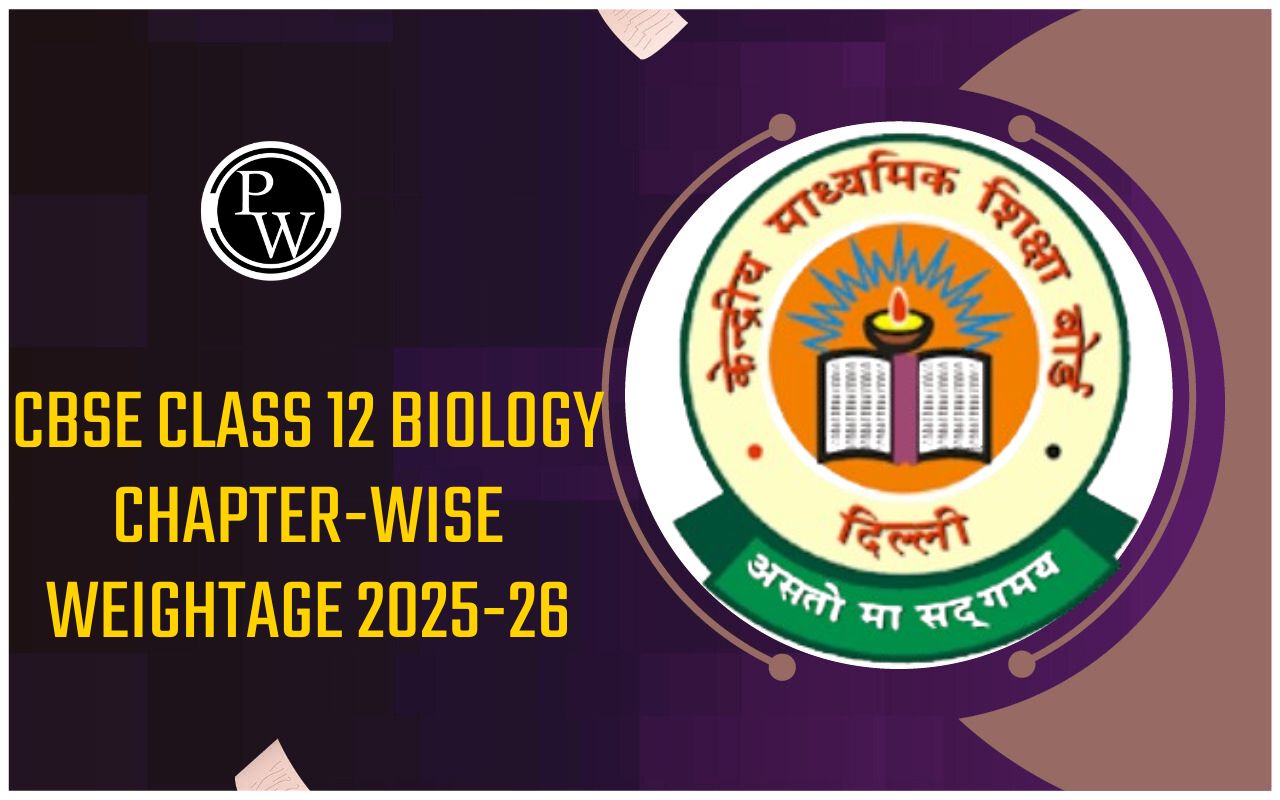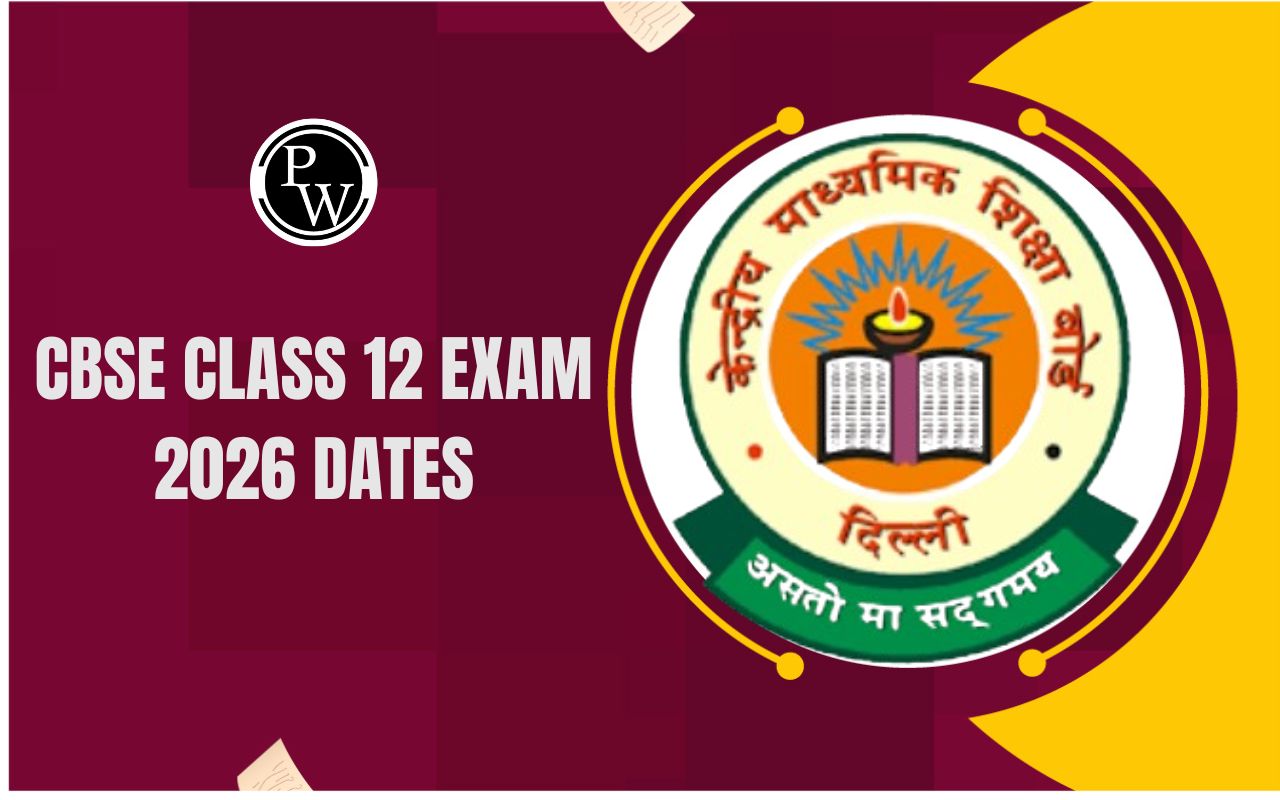

CBSE Class 12 History Sample Paper 2024-25: The CBSE Class 12 History Sample Paper for the academic year 2024-25 has been officially released to help students in their preparation for the upcoming board examinations. This sample paper provides a detailed overview of the exam format including the types of questions that will be asked and the marking scheme that will be followed.
By practicing with the sample paper students can gain a deeper understanding of important historical concepts and themes allowing them to identify areas where they may need additional focus. The sample paper is a valuable resource for time management during the exam, helping students to develop effective strategies for answering questions within the allotted time.CBSE Class 12 History Sample Paper 2024-25 Overview
Here is the overview of CBSE Class 12 History Sample Paper 2024-25:| Title | Details |
|---|---|
| Released By | Central Board of Secondary Education (CBSE) |
| Class | 12 |
| Subject | History |
| Academic Year | 2024-25 |
| Purpose | Assists students in preparing for board exams and familiarizes them with the exam structure. |
| Benefits | Helps students understand the types of questions, marking scheme, and enhances their overall exam readiness. |
Class 12 History Sample Paper 2024-25
The Class 12 History Sample Paper 2024-25 is an important resources for students preparing for their board exams. By solving this resource students can become familiar with the types of questions they will encounter, which helps them grasp the exam format and marking scheme. This practice not only boosts their confidence but also enhances their study effectiveness as they gear up for their upcoming exams. Working through the sample paper enables students to evaluate their understanding of historical concepts and identify areas that may require additional focus, making it a important resource of their exam preparation strategy.Class 12 History Sample Paper 2024 Pattern
According to the official sample paper released by the CBSE for Class 12 History the question paper consists of a total of 34 questions , carrying a total weightage of 80 marks , to be completed within 3 hours . The sample paper is divided into five sections , each with specific question types and mark distributions as outlined below:- Section A : This section features multiple-choice questions (Questions 1 to 21), with each question worth 1 mark .
- Section B : It contains Short Answer Type Questions (Questions 22 to 27), with each question carrying 3 marks . Responses should be within 60 to 80 words for each question.
- Section C : This section consists of Long Answer Type Questions (Questions 28 to 30), each worth 8 marks . Responses should be limited to 300-350 words per question.
- Section D : It includes Source-based questions (Questions 31 to 33), where each question has three sub-questions, each valued at 4 marks .
- Section E : The final question (Question 34) is map-based and is worth 5 marks , requiring students to identify and mark relevant locations on a map.
History Sample Paper Class 12 2024-25 PDF Download
Students preparing for the CBSE Class 12 History exam can download the 2024-25 Sample Paper, along with its marking scheme and solutions, from the links provided below. This sample paper is an important resource for understanding the exam format and familiarizing themselves with the types of questions that will be asked.History Sample Paper Class 12 2024-25 PDF Download
Practicing with the sample paper will help students enhance their exam preparation identify important topics and improve their time management skills during the actual exam. By reviewing the marking scheme and solutions students can gain valuable insights into how to effectively structure their answers to achieve maximum marks. This thorough preparation will build their confidence and ensure they are well-equipped to tackle the board examination successfully.History Sample Paper Class 12 2024 Solved
The Class 12 History Sample Paper for 2024 has been officially released along with a marking scheme. This resource is invaluable for students preparing for their board exams allowing them to practice and understand how to effectively answer different types of questions.Q) Which of the following options accurately describes the significance of the Sangam Age in the context of literature?
A. It marked the introduction of Sanskrit literature in South India.
B. It was a period of decline in literary activities in Tamil Nadu.
C. It witnessed the flourishing collection of ancient Tamil literature.
D. It was characterized by the dominance of Greek literature in India.
Q) To which one of the following dynasties did raja Gotami-puta Siri-Satakani belong?
A. Vakataka
B. Satvahana
C. Kushan
D. Gupta
Q) Consider the following statements regarding Buddhism and choose the correct option.
I. The concept of Bodhisattva is central to Hinayana sect of Buddhism.
II. Bodhisattva is a compassionate one on his way to enlightenment.
III. Bodhisattva achieve nibbana for personal salvation.
Options
A. II & III
B. II &III
C. I & II
D. I & III
Q) Which of the following skills can be identified from Al-Biruni’s writings?
A. Proficiency in diplomacy and political negotiation.
B. Fluency in multiple languages and a broad intellectual curiosity.
C. Expertise in military strategy and warfare tactics.
D. Exceptional talent for storytelling and vivid descriptions.
Q) Which of the following statements is incorrect about Andal?
A. Andal was a woman Alvar, the most striking features of her compositions were widely sung.
B. Andal was a woman Nayanar, she incorporated the prevailing caste system in the society.
C. Andal saw herself as the beloved of Vishnu; her verses express her love for the deity.
D. Andal saw herself as the beloved of Krishna; her verses express her love for the deity
Q) Imagine you are analysing a historical document from the Vijayanagar Empire. Which of the following documents would be most helpful in understanding the relationship between the empire and religious institutions?
A. A military chronicle detailing the conquests of a Vijayanagar rulers.
B. A record of diplomatic exchanges with traders and foreign ambassadors.
C. A legal code outlining the rights and responsibilities of urban classes.
D. An imperial decree granting land or privileges to a sacred organization.
Q) Which of the following developments significantly contributed to the increased flow of silver bullion into India through trade with Europe during the 16th-18th centuries?
A. The rise of the Ottoman Empire in Asia
B. The opening of the new world through voyages
C. The Ming Dynasty’s expansion into Southeast Asia
D. The decline of the Safavid Empire in Asia
Q) How did the compilation of the Ain-i Akbari contribute to Emperor Akbar’s vision of governance? Choose the best suitable option from the following.
A. By emphasizing military strategies for territorial expansion.
B. By documenting religious rituals and practices across the empire.
C. By providing information on administrative and cultural traditions.
D. By focusing on trade routes and economic policies.
Q) What insights did Francois Bernier provide about the economic structure of Mughal India? Choose the best suitable option from the following.
A. The prevalence of private land ownership and equitable distribution of wealth.
B. The dominance of state-controlled resources and limitations on private property.
C. The absence of trade networks and economic isolation from global markets.
D. The reliance on foreign investments and the absence of indigenous industries.
Q) Compare and contrast the impacts of the American Civil War on cotton production in India and the United States. Choose the best suitable option from the following.
A. Both countries experienced a decline in cotton production due to the war.
B. India’s cotton production increased while the United States experienced a decline.
C. The United States saw increased cotton production while India’s remained stagnant.
D. Both countries saw a surge in cotton exports during the war period.
Q) Why did the rebellion in Awadh become a symbol of resistance against British rule? Choose the best suitable option from the following.
A. Due to the region’s economic prosperity under native rule
B. Due to the displacement of Nawab Wajid Ali Shah and taluqdars
C. Due to favourable land revenue policies towards the peasantry
D. Due to Awadh ‘s central position for organizing rebel forces.
Q) Which of the following represents the correct chronological order of events related to agrarian developments in India during the 19th century?
I. The Permanent Settlement in Bengal
II. The Deccan Riots Commission
III. The Santhal Rebellion
IV. The Fifth Report by a Select Committee.
Options:
A. I, II, III & IV
B. II, III, IV & I
C. III, II, I & IV
D. I,IV,III & II
Q) Which one of the following was the Gandhi’s main demands for the peasants in Champaran?
A. Increase in minimum wages of workers
B. Freedom to cultivate the crops of their choice.
C. Reduction in government taxes for social classes
D. Indian education for all farmers’ children
Q) Complete the following with the correct option regarding the role of leaders in the history of nationalism of their respective countries.
Ho Chi Minh: Vietnam, George Washington: ——————–
A. USA
B. UK
C. France
D. Canada
Q) Which of the following were the key ideals associated with the social struggles in India since the nineteenth century?
A. Autonomy, hierarchy, and traditionalism
B. Democracy, equality, and justice
C. Imperialism, colonialism, and bureaucracy
D. Monarchy, privilege, and conservatism
Q) A. Analyse the layout of Harappan cities to identify features that promoted cleanliness and public health.
OR
B. Examine the challenges historians face in deciphering the Harappan script.
Q) How does the Mahabharata show the multicultural nature of ancient Indian society? Explain with examples.
Q) A. Examine the impact of Bhakti and Sufi poetry on the development of regional languages and literature.
OR
B. Examine how music and devotional songs in Bhakti and Sufi traditions serve spiritual expression and community unity.
Q) Explain the term “Little Republics” as applied to villages during the Mughal period.
Q) Describe the aspirations and objectives of the rebels during the Indian Rebellion of 1857, as reflected in their proclamations and actions.
Q) How did the philosophical and religious developments during the first millennium BCE in India influence the socio-political aspects? Explain with examples.
Q) ‘The establishment of the Vijayanagar Empire considered significant in the history of the Indian subcontinent’. Justify the statement.
Q) Read the following source carefully and answer the questions that follow:
Inscriptions
Inscriptions are writings engraved on hard surfaces such as stone, metal, or pottery. They usually record the achievements, activities, or ideas of those who commissioned them and include the exploits of kings, or donations made by women and men to religious institutions. Inscriptions are virtually permanent records, some of which carry dates. Others are dated on the basis of palaeography or styles of writing, with a fair amount of precision. For instance, in c. 250 BCE the letter “a” was written like this: By c. 500 CE, it was written like this: The earliest inscriptions were in Prakrit, a name for languages used by ordinary people. Names of rulers such as Ajatasattu and Asoka, known from Prakrit texts and inscriptions, have been spelt in their Prakrit forms in this chapter. You will also find terms in languages such as Pali, Tamil, and Sanskrit, which too were used to write inscriptions and texts. It is possible that people spoke in other languages as well, even though these were not used for writing.
I. What role does palaeography play in determining the age of inscriptions?
II. How do inscriptions contribute to our understanding of ancient societies and cultures?
III. What insights can be gained from studying the languages used in inscriptions across different regions and time periods?
Q) Read the following source carefully and answer the questions that follow:
Translating texts, sharing ideas
Translating texts, sharing ideas Al-Biruni’s expertise in several languages allowed him to compare languages and translate texts. He translated several Sanskrit works, including Patanjali’s work on grammar, into Arabic. For his Brahmana friends, he translated the works of Euclid (a Greek mathematician) into Sanskrit.
I. Analyse the advantage Al-Biruni gained from his expertise in multiple languages?
II. Analyse the significance of Al-Biruni translating Patanjali’s work on grammar into Arabic?
III How did Al-Biruni’s translations contribute to the mutual understanding and appreciation between Islamic and Indian civilizations?
Q) Read the following source carefully and answer the questions that follow:
Why was salt the symbol of protest?
This is what Mahatma Gandhi wrote: The volume of information being gained daily shows how wickedly the salt tax has been designed. In order to prevent the use of salt that has not paid the tax, which is at times even fourteen times its value, the Government destroys the salt it cannot sell profitably. Thus, it taxes the nation’s vital necessity; it prevents the public from manufacturing it and destroys what nature manufactures without effort. No adjective is strong enough for characterising this wicked dog-in-the-manger policy. From various sources I hear tales of such wanton destruction of the nation’s property in all parts of India. Maunds if not tons of salt are said to be destroyed on the Konkan coast. The same tale comes from Dandi. Wherever there is likelihood of natural salt being taken away by the people living in the neighbourhood of such areas for their personal use, salt officers are posted for the sole purpose of carrying on destruction. Thus, valuable national property is destroyed at national expense and salt taken out of the mouths of the people. The salt monopoly is thus a fourfold curse. It deprives the people of a valuable easy village industry, involves wanton destruction of property that nature produces in abundance, the destruction itself means more national expenditure, and fourthly, to crown this folly, an unheard-of tax of more than 1,000 per cent is exacted from a starving people. This tax has remained so long because of the apathy of the general public. Now that it is sufficiently roused, the tax has to go. How soon it will be abolished depends upon the strength the people.
I. What does Gandhi’s reference to the “power of peace and non-violence” suggest about his strategic approach to resistance against British colonial rule?
II. What parallels can be drawn between Gandhi’s critique of the salt tax and broader movements for social justice and human rights?
III. How does Gandhi’s reference to the destruction of salt by the government shed light on the broader implications of colonial policies on India’s natural resources?
Download PW Store CBSE Class 12 History Sample Paper Book PDF
Benefits of Practicing History Sample Paper Class 12 CBSE 2024-25
Practicing the Class 12 History sample paper for the CBSE 2024-25 has several benefits for students:Familiarization with Exam Format : Students will become accustomed to the structure and layout of the exam, including the types of questions and sections.
Understanding Marking Scheme : The sample paper provides insights into the marking scheme, helping students prioritize their study efforts based on the weightage of different sections.
Identifying Important Topics : By working through the sample paper, students can identify key themes and topics that are frequently tested, allowing for targeted revision.
Improved Time Management : Practicing the sample paper under timed conditions helps students develop better time management skills, enabling them to complete the actual exam more efficiently.
Self-Assessment : Students can evaluate their understanding and knowledge of the subject, identifying areas where they need further improvement.
Boosting Confidence : Regular practice builds confidence and reduces exam anxiety, helping students feel more prepared on exam day.
Developing Answer Structuring Skills : By reviewing the solutions provided, students can learn how to structure their answers effectively, which is crucial for maximizing marks.
CBSE Class 12 History Sample Paper 2024-25 FAQs
Has CBSE released sample paper 2025 class 12?
What is the purpose of the CBSE Class 12 History sample paper?
How many questions are there in the sample paper?
How can practicing the sample paper benefit me?












